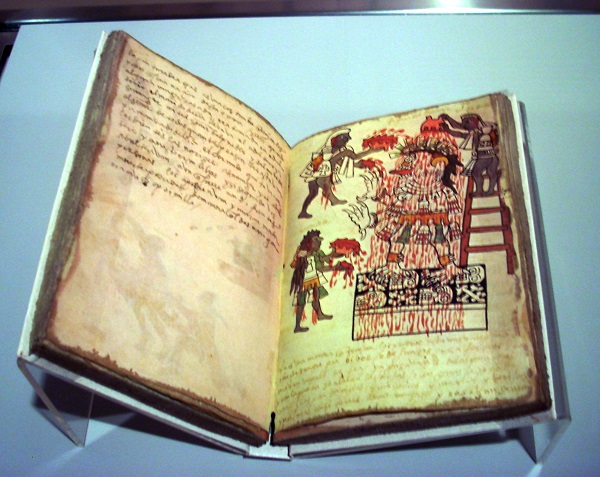The oral traditions of Native Americans are historical content that most academics refuse to reference, even in the face of startlingly accurate perceptions of early earth conditions and human occupation. This is most apparent from an anthropological perspective when we seek to understand the great antiquity of the Maya, one of the most misunderstood and thought-provoking cultures in the Americas.
What little we do know about the early Maya comes from the Spanish, the few sacred books (codices) that were spared in the genocide, and recent decipherment of stela (standing stone markers.)
Arriving in the New World seeking gold and new lands for the monarchy, the chronicles of the Spanish conquistadors described the ruins of magnificent cities, strange observatories for scanning the heavens, and pyramid complexes abandoned years earlier.

Codex_Tudela,_Museo_de_América
In their ignorance, the Catholic priests who made the cross-Atlantic journey murdered anyone who resisted religious conversion, and in what can only be described as acts against humanity, destroyed or burnt all references to the Mayan past, including codices, technical manuals, and volumes of scientific research perhaps thousands of years old.

The Grolier Codex, sometimes referred to as the Sáenz Codex or the Maya Codex of Mexico.
There were many books in existence at the time of the Spanish conquest of Yucatán in the 16th century; most were destroyed by the Catholic priests. Many in Yucatán were ordered destroyed by Bishop Diego de Landa in July 1562.
After hearing of Roman Catholic Maya who continued to practice idol worship, Fray Diego de Landa ordered an Inquisition in Mani, Yucatán, ending with a ceremony called Auto de Fé. During this ceremony on July 12, 1562, a disputed number of Maya codices (according to Landa, 27 books) and approximately 5000 Maya cult images were burned.
Diego de Landa catalogued the Maya religion, the Maya language, and the Maya writing system in his book Relación de las cosas de Yucatán. The work was written around 1566.

Diego de Landa Calderón, O.F.M. (12 November 1524 – 29 April 1579) was a Spanish bishop of the Roman Catholic Archdiocese of Yucatán. Many historians criticize his campaign against idolatry. In particular, he burned almost all the Mayan manuscripts
Who were the Maya? A scientifically advanced civilization that seemed to have magically arrived in Central America?
We now know the Maya are one of the earliest established people in the Americas, arriving thousands of years before the Aztec, Mixtec, Zapotec and other peoples. What we don’t know is how early they arrived, and from where.
The Yucatan Times Newsroom

